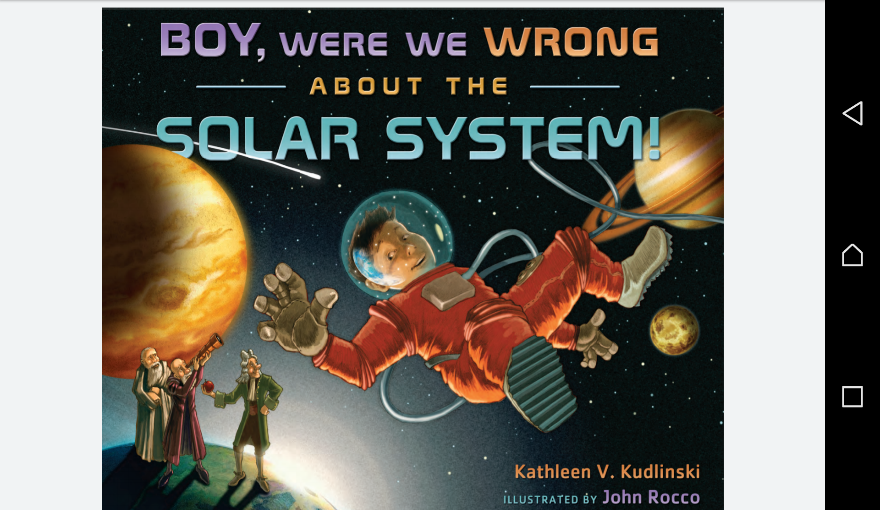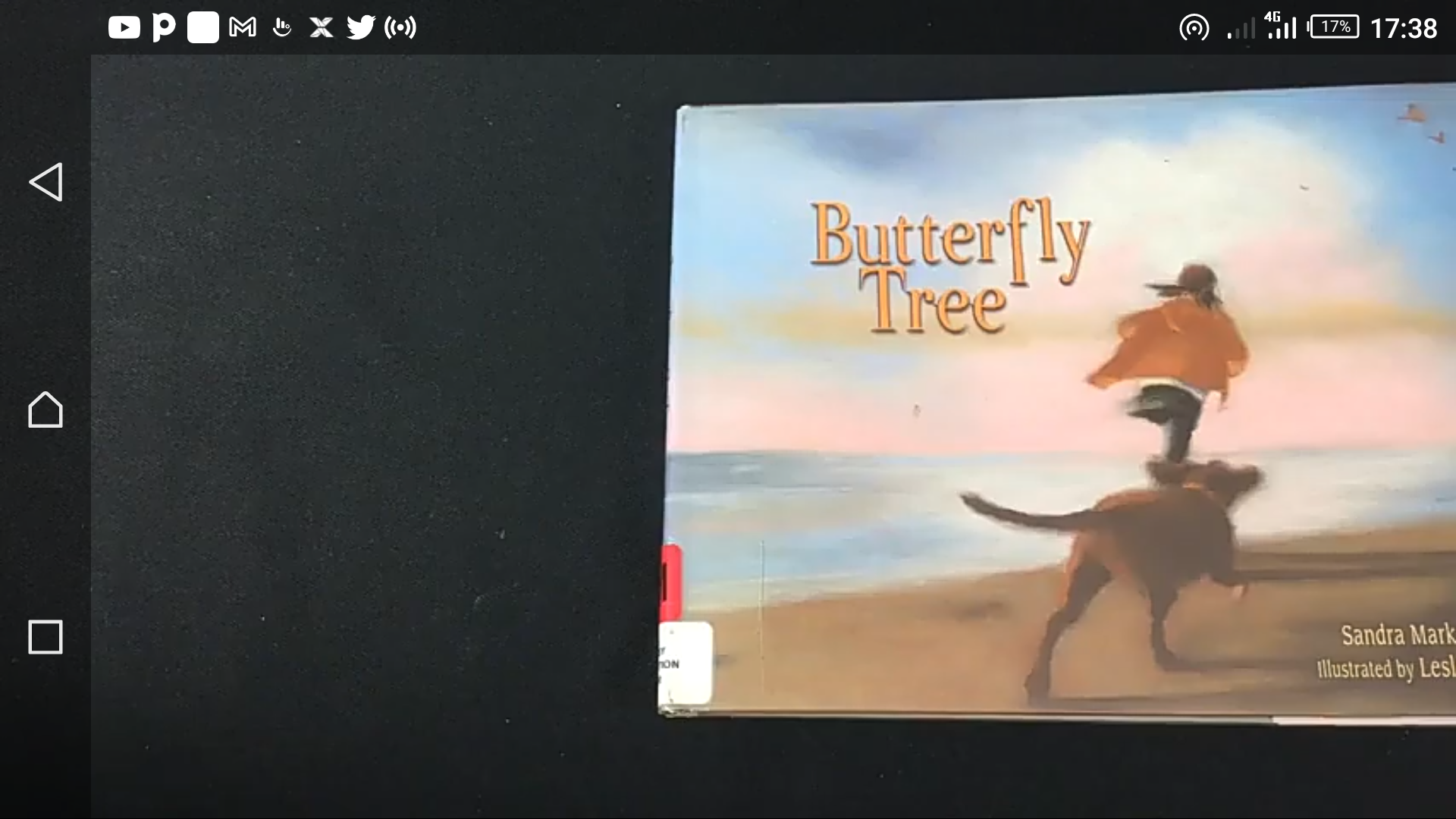The books I have chosen for this assignment are Boy and We Were Wrong About the Solar System! by Kathleen Kudlisnki and Butterfly Tree by Sandra Markle.
The Features of Boy, We Were Wrong About the Solar System

Boy, We Were Wrong About the Solar System! is an excellent non-fiction picture book to use for intermediate students to demonstrate how scientific theories evolve. There are book comprehension questions as well as an analysis of a clay world model lab, a planet coloring activity, and a compare/contrast sheet (Kudlinski, 2015). There is also a list of individual projects from which students can select, providing a perfect way to distinguish themselves in terms of what they prefer. The text uses a humorous way to explain what scientists have learned about the solar system over time. It outlines what was once commonly held beliefs and moves on to explain how these beliefs have evolved. The text is accompanied by vibrant, colorful illustrations that complement the text. While there is a timeline of names and dates at the end of the novel, this is inadequate for seeking accurate details.
The Features of Butterfly Tree

Butterfly Tree is a fiction picture book that describes butterfly migration. The book has no table of contents nor an index page. However, the text is accompanied by Wu’s bright, colorful illustrations, which depict Jill’s actions, hence engaging the reader. For instance, the sky has a wispy mist that turns orange, making Jill curious. The words and the pictures show how children experience the mystery of the planet. The book uses evocative language, which creates a sense of mystery and wonder, and the imagery is drawn. Markle captures the atmosphere beautifully, catching the sound of sand on the fingertips, the woods’ warmth after a day at the beach, and the play of light and shadow in the woods. Everything is soft and filled with rich color, and at the end, it has information on Markle’s experience of migrating monarchs, among other sources.
NTSA Criterion
Using the NTSA criterion, these books are influential for instructional teaching because the material presented in both texts is explicit, accurate, and up-to-date. The books also avoid the over-simplification seen in the storylines. Kudlinski explores the weather beyond what can be seen by the naked eye, while Markle’s text uses signs to illustrate weather change. Moreover, they use data to support generalizations and are free from gender, ethnic, and socioeconomic bias. None of the texts show any form of bias and are neutral based on gender, ethnicity, and socioeconomic status.
Why I Chose the Books
I chose these books because they are fun, beautifully illustrated and humorous, informative, and children would love them as they inspire curiosity. They are also useful to read aloud introductions to the study on the weather. The vocabulary and illustrations used in the books are beautifully drawn and reinforce the text, adding interest to the readers, and the visual graphics are age-appropriate and capturing for the readers.
Examples that Illustrate the Links Between the Books and Weather
In Boy, We Were Wrong About the Solar System, Kathleen explains the historical weather misconceptions with contemporary understandings (Kudlinski, 2015). For instance, storm formation, weather prediction, origin and meaning of weather words, and climate change. In Butterfly Tree, Markle (2011) uses the weather mystery in allowing kids to find out what sure signs mean. The orange cloud and migrating butterflies show the connection between weather changes and the migration of animals.
Effectiveness of Picture Books in Teaching Science
Picture books effectively teach science as the illustrations and visuals in the books help learners process complex concepts within the texts and reduce learning frustrations. Young readers develop an interest in the texts, building their scientific skills. Students who are taught to visualize the text become more engaged in the lesson and have a more memorable learning experience. Another critical science competence that can be enhanced through reading instruction is inference.
References
Kudlinski, K. (2015). Boy, we were wrong about the solar system! Bulletin of the Center for Children’s Books.
Markle, S. (2011). Butterfly tree. Peachtree Publishers.